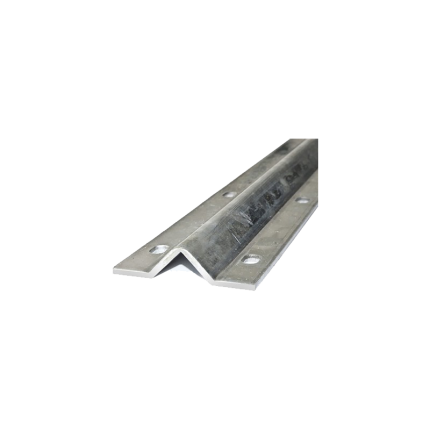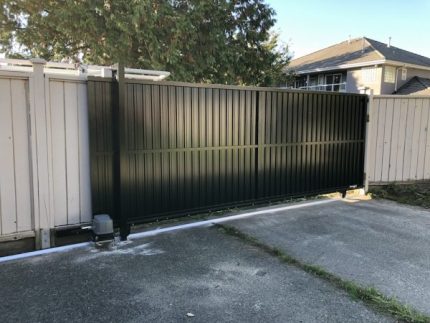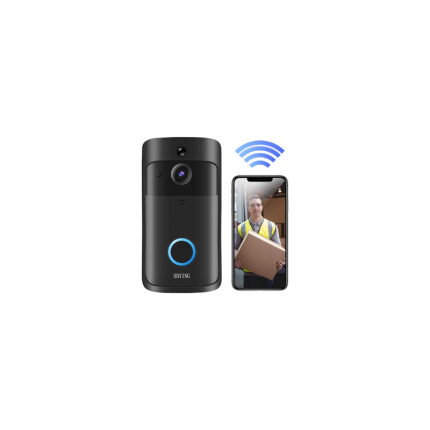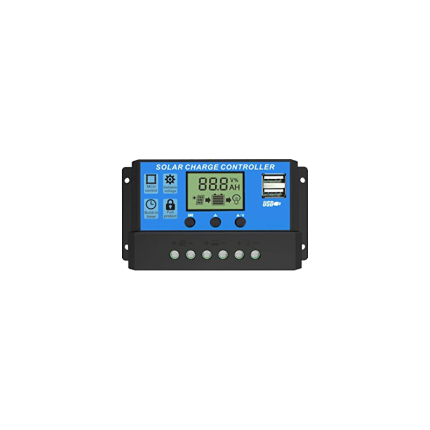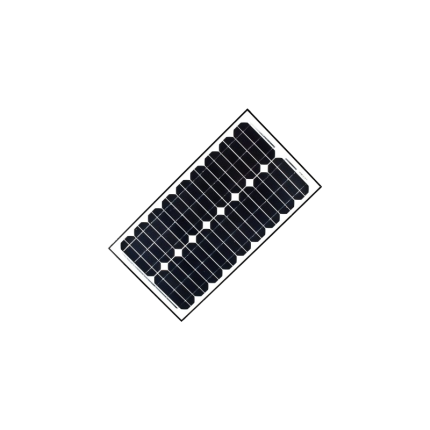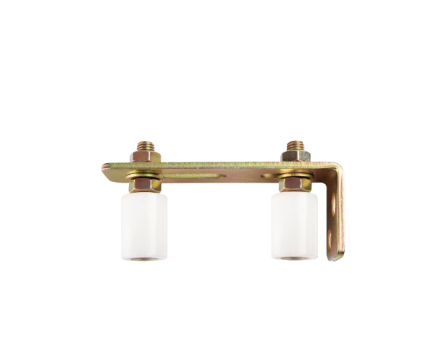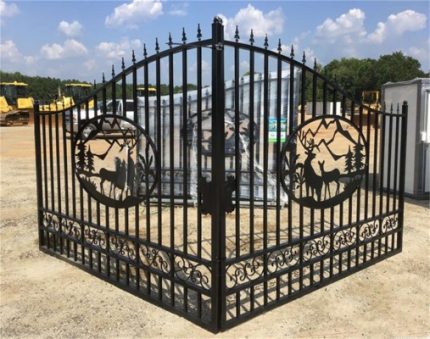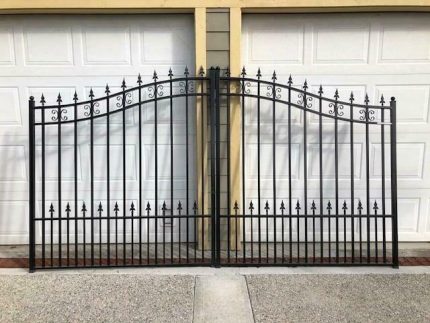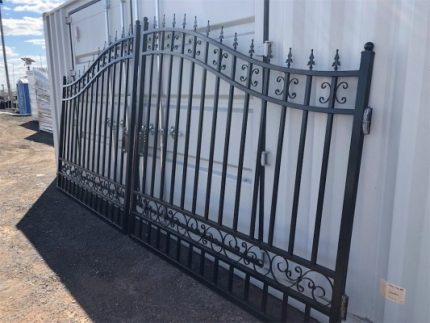Shop
Sliding Gate V-Track
Ship or pick up from our office.
Sliding Gate V-Track
NOTE: For 25 ft sliding gate V-Track, please do not make an online order.Because of the limit of the shipping length and weight, we have to cut the full length of the product (25') to 2 x (12'-6") for pick-up from our store OR 4 x (6'-3") to send by Canada Post.
If your order requires cutting services, additional costs will apply.
To create an order for sliding gate V-Track, please send your request with the shipping address, postal code, and the length of your inquiry in the note. You will receive a quotation with the shipping costs within a maximum of one business day. A sliding gate V-track is a specific type of ground track that a sliding gate rolls on, utilizing wheels with a complementary V-shaped groove. This system is one of the most common ways to implement a sliding driveway gate, especially for residential and light commercial applications. Here's a breakdown: Purpose: The sliding gate V-track as the linear guide and support for the entire sliding gate. It ensures that the gate moves in a straight line, smoothly, and without wobbling or derailing as it opens and closes. It's an integral part of a "rolling gate" system, where the gate literally rolls on the ground. Key Characteristics and Components:- V-Shape Profile: The most defining feature. The track has an inverted V-shape or a 90-degree angle (like an angle iron) with a slightly rounded top. This V-shape mates perfectly with the V-groove wheels attached to the bottom of the gate.
- Materials:
- Galvanized Steel (Most Common): Highly durable, strong, and resistant to corrosion due to the galvanization process. It can handle heavy gates and high traffic volumes. Sections are typically joined together to form the required length.
- Aluminum: Lighter weight and excellent corrosion resistance. Often used for lighter gates or in environments where rust is a major concern (like coastal areas).
- Installation:
- Bolt-Down: The V-track is typically designed to be bolted securely to a concrete driveway or foundation. It has pre-drilled holes for anchor bolts. This allows for easier installation on existing concrete and simpler replacement if a section gets damaged.
- Embeddable (Less Common for DIY): Some V-tracks are designed to be embedded directly into wet concrete during construction.
- Level and Straight: Crucially, the V-track must be installed perfectly level and straight along the entire travel path of the gate to ensure smooth and consistent operation. Any dips, humps, or curves will cause issues with the gate's movement and can put undue strain on the gate operator and wheels.
- Lengths: Sliding gate V-tracks are sold in sections (e.g., 6 feet, 10 feet, 2.4 meters, 3 meters). Multiple sections are joined together using connection pins or by welding to achieve the total required length, which should be at least twice the width of the gate opening to allow the gate to fully retract.
- Complementary Hardware:
- V-Groove Wheels: These are essential and roll directly on top of the V-track. As discussed previously, they have a V-shaped groove that fits snugly into the track.
- Guide Rollers/Posts: Used at the top of the gate to keep it upright and prevent tipping.
- Gate Stops: Installed at the ends of the track to prevent the gate from over-traveling.
- Stability: The sliding gate V-track V-groove design provides excellent lateral stability, keeping the gate aligned and preventing it from wobbling.
- Load Capacity: Due to the direct ground support and robust V-track/wheel combination, these systems can handle very heavy and long gates.
- Simple Mechanical Principle: The system is straightforward, making it reliable.
- Debris Accumulation: The main drawback is that the V-track, being on the ground, is susceptible to collecting dirt, leaves, gravel, snow, and ice. This debris can obstruct the gate's movement, cause wear on the wheels, and may even lead to derailment or damage to the gate opener. Regular cleaning of the track is essential, especially during winter months in Canada.
- Driveway Disruption: Installing a sliding gate V-track requires modifying the driveway surface, often by bolting it down or embedding it in concrete, which creates a slight raised profile.
- Water Drainage: Proper drainage around the track is important to prevent water pooling.
Sliding gate, Full Privacy, 12 ft
Pick up from our showroom at #100, 11538 132A Street, Surrey, BC.
Sliding gate, Full Privacy, 12 ft
- Aluminum Full Privacy Sliding Gate
- Sliding Gate Package Includes: 1 x driveway gate panel, 2 x steel gate posts (8' H by 4" x 4" each), Rollers, Wheels, V-tracks
- Material: Aluminum Tube Framing, Aluminum privacy panels with a black powder paint coating
- Sliding Gate Dimensions: 12' W x 6' H.
- No hidden fees
A sliding gate is a type of gate that opens and closes by moving horizontally along a track, typically along a fence line.
Unlike swing gates, which rotate on hinges, sliding gates save space, making them ideal for narrow driveways or areas with limited space. They are commonly used in residential, commercial, and industrial settings for security and access control.
Here's a more detailed explanation:
How it works:
-
Track and Wheels:Sliding gates typically move along a track, either embedded in the ground or mounted along the fence line. They are supported by wheels or rollers that run along the track.
-
Mechanism:The gate is usually opened and closed by a motor and gear system that engages with a toothed rack on the gate, causing it to slide.
-
Space Saving:The horizontal movement allows sliding gates to operate in areas where swing gates wouldn't be feasible due to space constraints.
-
Security:Sliding gates offer a robust security solution, especially when combined with access control systems.
-
Types:Common types include traditional sliding gates, which use a track, and cantilever gates, which don't require a ground track and are supported by a counterbalance system.
-
Benefits:They are known for their space-saving design, ease of installation (especially cantilever gates), and minimal maintenance.
Smart Video Doorbell
Ship or pick up from our office.
Smart Video Doorbell
*WiFi connection *Android/IOS app on the smartphone *Answer visitors using smartphone worldwideSolar charge controller
Ship or pick up from our office.
Solar charge controller
A solar charge controller is an electronic device that regulates the flow of electricity from solar panels to a battery bank, protecting the batteries from overcharging and over-discharging. It's a crucial component in off-grid and hybrid solar power systems. Key Functions of a Solar Charge Controller- Preventing Overcharging: Solar panels can produce varying amounts of electricity depending on sunlight intensity. If this unregulated power is sent directly to batteries, it can lead to overcharging, which damages the batteries, reduces their lifespan, and can even pose a safety risk (e.g., overheating, gassing). The charge controller monitors the battery's voltage and reduces or stops the current flow when the battery reaches its full charge.
- Preventing Over-discharging: Some charge controllers also have a low voltage disconnect (LVD) feature that protects the battery from being excessively drained. Deep discharging can also cause irreversible damage to batteries. The controller will disconnect the load when the battery voltage drops below a certain threshold.
- Optimizing Charging: Modern charge controllers use advanced technologies to ensure the batteries are charged efficiently, maximizing the energy harvested from the solar panels.
- Reverse Current Prevention: At night, when solar panels aren't producing power, there's a risk of electricity flowing back from the batteries to the panels, which would drain the batteries. Charge controllers include a diode or similar mechanism to prevent this reverse current flow.
- System Protection: Many controllers offer additional safeguards against issues like short circuits, overloads, and reverse polarity.
- How they work: PWM controllers regulate the voltage by rapidly switching the solar panel input on and off. The "width" of these pulses is adjusted to control the average voltage and current sent to the battery. When the battery is nearly full, the pulses become shorter, reducing the charging current.
- Advantages: They are generally less expensive and simpler in design, making them suitable for smaller, less complex solar systems (e.g., small RV setups, solar lighting).
- Disadvantages: They are less efficient than MPPT controllers, especially in conditions where the solar panel's voltage significantly differs from the battery voltage. They essentially "pull down" the solar panel's voltage to match the battery, leading to energy loss.
- How they work: MPPT controllers are more sophisticated. They can "track" the maximum power point (MPP) of the solar panel. The MPP is the optimal combination of voltage and current at which the solar panel produces the most power. The MPPT controller converts any excess voltage from the solar panels into additional current, thereby maximizing the energy sent to the battery. It's like an automatic transmission that adjusts the gear to get the most power from the engine.
- Advantages: They are significantly more efficient than PWM controllers (often 10-30% more, especially in colder temperatures or when the battery is deeply discharged). They are ideal for larger, more complex solar systems and those where the solar panel array voltage is higher than the battery bank voltage. This also allows for longer wiring runs with less power loss.
- Disadvantages: MPPT controllers are more expensive due to their advanced technology.
Solar panel
Ship or pick up from our office.
Solar panel
A gate operator solar panel is a component of a solar-powered gate opener system. Its primary function is to convert sunlight into electricity, which then powers the automatic gate and charges its battery. Here's a breakdown of what that means and how it works: How it Works:- Solar Energy Capture: The solar panel, typically made of photovoltaic (PV) cells, captures sunlight.
- Electricity Generation: The PV cells convert the sunlight into direct current (DC) electrical energy.
- Charging the Battery: This electrical energy is sent to a control box, where it charges a battery (often a deep-cycle marine battery or a specialized gate opener battery).
- Powering the Gate: The stored energy in the battery is then used to power the gate's motor and control system, allowing it to open and close.
- Backup Power: The battery acts as a backup, ensuring the gate can function even at night, during cloudy periods, or during power outages when the solar panel isn't generating enough electricity.
- Solar Panel: The component that captures sunlight and converts it into electricity. These come in various wattages (e.g., 5W, 10W, 20W, 40W, 60W, 90W, 120W), with the appropriate size depending on gate usage and accessories.
- Battery: Stores the electrical energy generated by the solar panel.
- Charge Controller/Regulator: Manages the flow of electricity from the solar panel to the battery, preventing overcharging and optimizing efficiency.
- Gate Operator/Motor: The mechanism that actually opens and closes the gate (can be for swing gates, slide gates, or barrier gates).
- Control Box: Houses the battery and control system for the gate operator.
- Mounting Bracket and Hardware: Used to securely install the solar panel.
- Wiring: Connects the solar panel to the control box and battery.
- Grid Independence: Ideal for remote areas or properties without easy access to the main power grid.
- Cost Savings: Reduces or eliminates electricity bills associated with operating a gate.
- Eco-Friendly: Utilizes a renewable, clean energy source, reducing reliance on fossil fuels.
- Power Outage Resilience: Continues to operate during power outages due to the stored battery power.
- Enhanced Safety: Often operate at lower voltage levels than AC systems, reducing the risk of electric shock.
Support Roller
Ship or pick up from our office.
Support Roller
Support Roller for sliding gates are essential components that ensure smooth, stable, and reliable gate operation.
They guide the gate along its track, preventing it from tipping or falling off and ensuring it opens and closes with minimal friction and noise.
Function:
-
Guidance:Support rollers are typically mounted on the gate posts and guide the gate along its track as it opens and closes.
-
Stability:They keep the gate upright and prevent it from swaying or falling out of alignment, especially in windy conditions or with heavier gates.
-
Smooth Operation:By minimizing friction, they allow the gate to slide easily and quietly, enhancing the user experience.
-
Durability:They are designed to withstand the wear and tear of regular use and exposure to the elements.
Types:
- Nylon Rollers: Often used due to their durability, smooth operation, and resistance to corrosion.
- Rubber Rollers: While cheaper, they may leave marks on the gate and wear out faster.
- V-Groove Wheels: Suitable for specific track types and known for their longevity.
Installation:
- Positioning: Support rollers are typically installed on the gate posts, positioned to guide the gate along its track.
- Spacing: A gap of 5-10mm is usually recommended between rollers to allow for some movement and prevent them from doing all the work, especially if the gate is not perfectly balanced.
- Fixation: They are usually secured with bolts or by welding them to the post.
Maintenance:
-
Lubrication:Applying a silicone-based lubricant to the support rollers and other moving parts can help maintain smooth operation and reduce noise.
-
Regular Inspection:Inspecting rollers for wear and tear or damage is recommended to ensure continued reliable performance.
Swing gate – Deer design – 14 ft
Swing gate - Deer design - 14 ft
- Pick up from our showroom at #100, 11538 132A Street, Surrey, BC.
- Royal Gate Deer Style Dual Swing Driveway Gate
- Gate Package Includes: 2 x driveway gate panel, 2 x steel gate posts (8′ H by 4″ x 4″ each), 4 x Heavy duty adjustable steel hinges
- Material: Hot Dip Galvanized steel gate with a black powder paint coating
- Gate Dimensions: 14′ W x 6′ H.
- No hidden fees
Swing gate – Classic design – 12 ft
Swing gate – Classic design - 12 ft
Pick up from our showroom at #100, 11538 132A Street, Surrey, BC.- Royal Gate Classic Style Dual Swing Gate
- Swing Gate Package Includes: 2 x driveway swing gate panel, 2 x steel gate posts (8′ H by 4″ x 4″ each), 4 x Heavy duty adjustable steel hinges
- Material: Hot Dip Galvanized steel swing gate with a black powder paint coating
- Gate Dimensions: 12′ W x 6′ H.
- No hidden fees
Swing gate – Classic design – 14 ft
Swing gate – Classic design - 14 ft
Pick up from our showroom at #100, 11538 132A Street, Surrey, BC.- Royal Gate Classic Style Dual Swing Driveway Gate
- Gate Package Includes: 2 x driveway gate panel, 2 x steel gate posts (8′ H by 4″ x 4″ each), 4 x Heavy duty adjustable steel hinges
- Material: Hot Dip Galvanized steel gate with a black powder paint coating
- Gate Dimensions: 14′ W x 6′ H.
- No hidden fees
Swing gate – Classic design – 16 ft
Swing gate – Classic design - 16 ft
- Pick up from our showroom at #100, 11538 132A Street, Surrey, BC.
- Royal Gate Classic Style Dual Swing Driveway Gate
- Gate Package Includes: 2 x driveway gate panel, 2 x steel gate posts (8′ H by 4″ x 4″ each), 4 x Heavy duty adjustable steel hinges
- Material: Hot Dip Galvanized steel gate with a black powder paint coating
- Gate Dimensions: 16′ W x 6′ H.
- No hidden fees
Swing gate – Classic design – 20 ft
Swing gate – Classic design - 20 ft
- Pick up from our showroom at #100, 11538 132A Street, Surrey, BC.
- Royal Gate Classic Style Dual Swing Driveway Gate
- Gate Package Includes: 2 x driveway gate panel, 2 x steel gate posts (8′ H by 4″ x 4″ each), 4 x Heavy duty adjustable steel hinges
- Material: Hot Dip Galvanized steel gate with a black powder paint coating
- Gate Dimensions: 20′ W x 6′ H.
- No hidden fees
Swing gate – Deer design – 12 ft
Swing gate – Deer design - 12 ft
- Pick up from our showroom at #100, 11538 132A Street, Surrey, BC.
- Royal Gate Deer Style Dual Swing Gate
- Swing Gate Package Includes: 2 x driveway swing gate panel, 2 x steel gate posts (8′ H by 4″ x 4″ each), 4 x Heavy duty adjustable steel hinges
- Material: Hot Dip Galvanized steel gate with a black powder paint coating
- Swing Gate Dimensions: 12′ W x 6′ H.
- No hidden fees
A swing gate is a type of gate that opens and closes by swinging on hinges, similar to a door.
It can be a single or double-leaf (bi-parting) design and is commonly used for driveways in residential, commercial, and industrial settings.
Key Features:
-
Mechanism:Swing gates rely on hinges and can be opened manually or automated with an electric motor.
-
Types:They can be single swing (one leaf) or double swing (two leaves).
-
Space Requirements:Single swing gates require space equal to the gate's width for the arc of its swing, while double swing gates require space for both leaves to swing open.
-
Cost:Swing gates are generally less expensive than sliding gates due to their simpler design and fewer moving parts.
-
Applications:They are suitable for various applications, including residential driveways, commercial entrances, and industrial yards.
-
Advantages:Swing gates offer flexibility in design, ease of installation, and relatively low maintenance.
-
Disadvantages:They may require more space for the swing arc and can be more susceptible to damage from impacts or uneven terrain.

